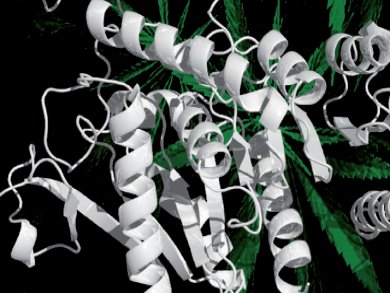Predicting how proteins fold requires either powerful supercomputers or cloud sourcing projects such as Folding@home, which uses people’s ability to recognize patterns. As folding usually occurs within milliseconds, it is also difficult to observe directly.
Michael Gross and colleagues, Washington University in St. Louis, USA, describe a proof-of-principle study in which they use a ‘snapshot’ approach to watch the protein barstar fold: The unfolded protein and hydrogen peroxide are injected into a capillary which is heated with an IR laser to initiate protein folding. A UV pulse is applied to form hydroxyl radicals which attach oxygen atoms to portions of the protein that are outside the folded structure. This process is repeated 500 times in quick succession.
The folded protein is enzymatically cleaved into peptides which are analyzed by LC-MS to see where and when oxygen was added to the protein providing “snapshots” of how the protein’s confirmation changes.
Image: (c) Wiley-VCH
- New method takes snapshots of proteins as they fold, University of Washington in St. Louis, USA
- Temperature Jump and Fast Photochemical Oxidation Probe Submillisecond Protein Folding
J. Chen, D. L. Rempel, M. L. Gross
J. Am. Chem. Soc. 2010, 132 (44), 15502–15504.
DOI: 10.1021/ja106518d



